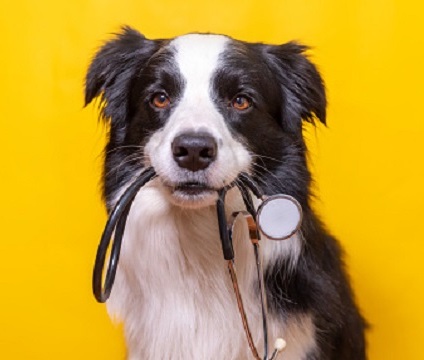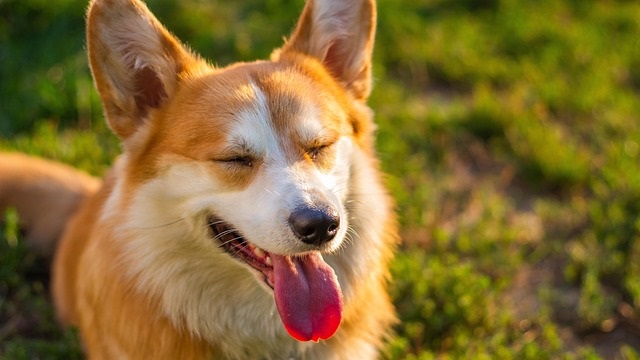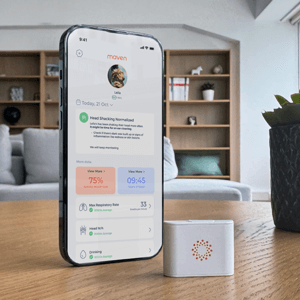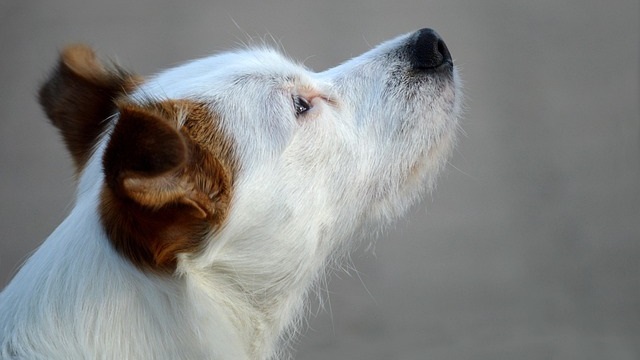Is Your Dog Having Trouble Breathing? What It Means and When to Act
It’s a sound that can send a shiver of fear through any pet parent: your dog struggling to breathe.
Whether it’s a sudden episode of gasping for air or a new pattern of fast, shallow breathing while they’re sleeping, it’s natural to feel alarmed and search for answers.
If your dog is having trouble breathing, getting educated is the first step toward getting them the help they need.
We understand that in these moments, you’re looking for trusted, clear advice on whether you need to rush to the vet or if you can safely monitor your dog at home.
This guide will help you understand the difference between normal and concerning breathing patterns, teach you how to monitor your dog’s respiratory rate, and give you the knowledge to confidently decide when to take action.
Key Takeaways
- Fast or shallow breathing while your dog is resting is a warning sign.
- Measuring the Resting Respiratory Rate (RRR) can help you detect issues early.
- Not all breathing issues are emergencies.
- Track breathing with tools like Maven to spot subtle changes.
What Does It Mean If a Dog Has Trouble Breathing?
When your dog is having trouble breathing, it’s a medical condition known as dyspnea.
This isn’t just heavy panting after a game of fetch—it’s a genuine struggle to get enough oxygen.
While panting is a normal way for dogs to cool down or express excitement, true respiratory distress looks and sounds very different. It can manifest as gasping, shallow breaths, or a noticeable effort just to inhale and exhale.

Not sure if your dog is sick?
Get a better idea of your dog’s current health status with our quick quiz.
Signs of Respiratory Distress in Dogs
Knowing the signs of respiratory distress in dogs is crucial for every pet owner. Look for these key indicators:
- Rapid or shallow breathing while resting. A dog breathing fast while resting is a major warning sign.
- Abdominal effort while breathing.
- Open-mouth breathing, especially if their tongue is hanging out in a way that seems unusual or strained.
- Gums that appear pale, blue, or gray. This is an obvious signal indicating a lack of oxygen.
- Coughing or gagging as if trying to clear something from their throat.
- Changes in posture, such as extending their head and neck to make breathing easier.
What Is a Normal Resting Respiratory Rate?
Your dog’s resting respiratory rate (RRR) is a simple yet powerful health metric. It’s the number of breaths your dog takes in one minute while they are completely calm and asleep. For most dogs, a normal RRR is between 15 and 30 breaths per minute.
A consistent RRR at the higher end of this range or, more importantly, a gradual increase in this number over time, can be an early indicator of serious conditions.
What Are the Causes of a Dog Having Trouble Breathing?

There are numerous reasons for a dog having trouble breathing, and the underlying cause often dictates the urgency of the situation. Some of the most common causes are:
- Heart Conditions: Congestive heart failure, for example, can cause fluid to build up in the lungs, making breathing difficult.
- Lung Diseases: Conditions like pneumonia, asthma, or a collapsed lung can directly impact your dog’s ability to get oxygen.
- Foreign Objects: If your dog has inhaled or choked on something, it can block their airway.
- Allergic Reactions: Severe allergic reactions can cause swelling in the throat and airways.
- Heatstroke: Excessive panting and gasping are key signs of heatstroke, which can be fatal.
- Obesity: Excessive weight can put a strain on your dog’s respiratory system.
How to Measure Respiratory Rate at Home
Measuring your dog’s RRR is easy and can be a life-saving habit.
- Wait for them to be completely at rest. This is best done while your dog is sleeping soundly.
- Locate their chest or abdomen. You’ll need to watch the rise and fall of their chest.
- Count the number of breaths in 15 seconds. Count each rise and fall as one breath.
- Multiply that number by four. This gives you their total breaths per minute. For example, if you count 7 breaths in 15 seconds, their RRR is 28 breaths per minute.
Regularly taking this measurement and recording it in a dog health tracker can help you notice changes before they become a crisis.
When Is It an Emergency?
While many conditions that cause breathing problems are serious, some are true emergencies requiring immediate vet care.
Call your vet if you notice any of the following symptoms:
- Gums that are blue, gray, or purple.
- Labored breathing that doesn’t improve with rest.
- Collapse or fainting.
- Open-mouthed breathing that is frantic or panicked.
- Any sign that your dog is actively choking.
In these situations, time is critical. Don’t wait to see if the symptoms get better.
“If your dog’s breathing seems labored, especially while resting or sleeping, that’s never something to ignore. Early changes in respiratory rate can be your first clue that something serious is happening.” — Carolina Domingues, DVM.
Why Tracking Breathing Over Time Matters

A single measurement of your dog’s RRR can be a useful snapshot, but tracking it over time is even more valuable.
For dogs with conditions like early-stage heart disease, their RRR might be normal one day and slightly elevated the next. A consistent pattern of a slowly increasing RRR is often the first signal of worsening health.
This kind of proactive monitoring can mean the difference between a routine vet visit and an emergency trip to the hospital for your dog with trouble breathing.
How Maven Monitors Respiratory Rate to Help Detect Issues Early
For worried pet parents, the thought of manually tracking your dog’s RRR every day can be daunting.
This is where Maven comes in.
Maven’s pet health tracker uses passive monitoring to track your dog’s RRR while they’re sleeping.

Maven Pet
Health Monitor
#1 Vet-recommended pet monitor! Tracks activity, rest, respiratory rate, water intake, scratching and other health indicators 24/7
By collecting this data every night, it builds a complete picture of your dog’s respiratory health over time. This gives you a powerful, data-driven way to know if your dog’s breathing is changing.
Instead of guessing, you’ll have a clear, easy-to-read chart to share with your vet, helping them make a faster, more accurate diagnosis.
Takeaways Recap
- Pay close attention to breathing at rest. If you notice your dog having difficulty breathing, especially while sleeping, take it seriously.
- Learn your dog’s baseline RRR. A normal rate is 15-30 breaths per minute.
- Track breathing over time to spot gradual increases. This is often the first sign of a health issue.
- Go to the vet immediately if you see blue gums, a collapsed state, or severe labored breathing.
- Use a tool like Maven to passively monitor RRR and get alerts about potential problems before they become critical.
By being informed and proactive, you can ensure your dog gets the best possible care, even in the middle of the night.
Maven Pet focuses on improving the quality of life of our pets with technology, using artificial intelligence (AI) to enable proactive pet care. By accurately collecting and monitoring pet data 24/7 and flagging any irregularities, Maven Pet empowers pet parents and veterinarians to stay ahead of potential health issues, ensuring the well-being and longevity of our beloved companions.




